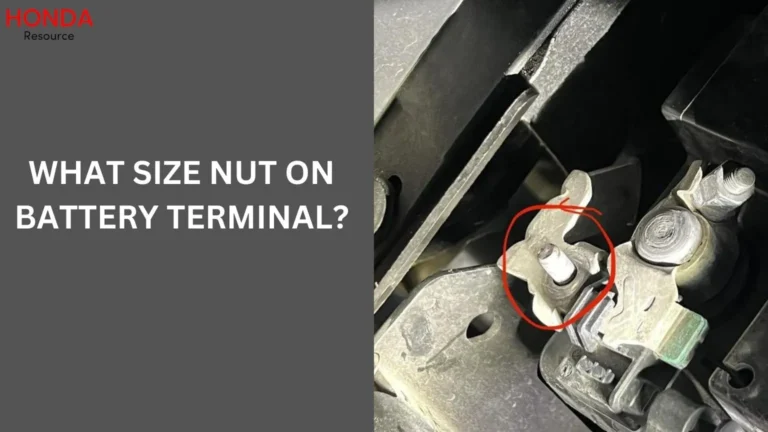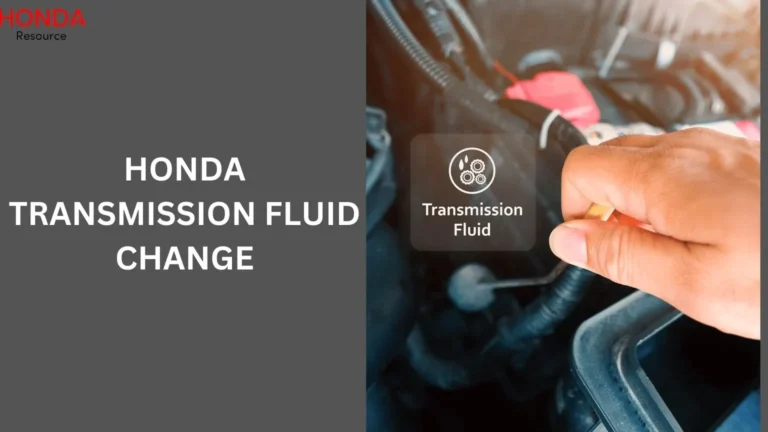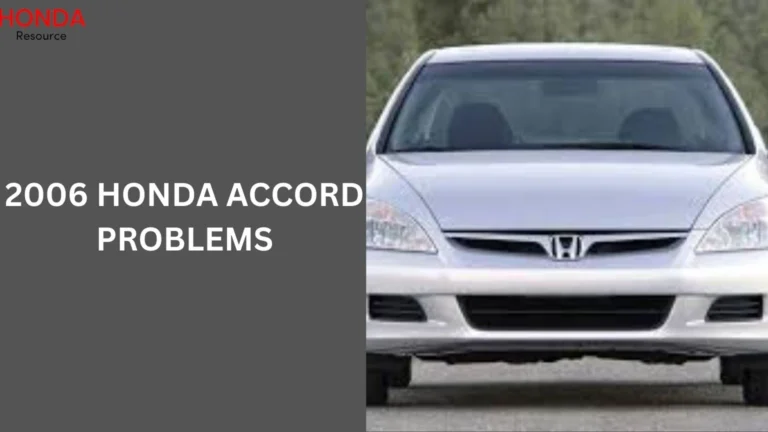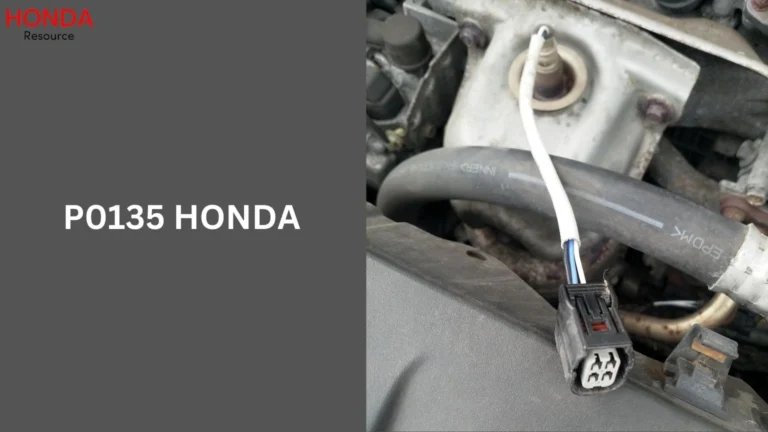P1486 Honda Accord (Mean, Causes & Fixing) of 2024
In modern cars like the Honda Accord, the OBD-II system plays a crucial role in monitoring the vehicle’s performance and detecting potential issues.
One common trouble code that Honda owners may encounter is the P1486 Honda Accord. Understanding what this code means, its causes, and symptoms, and how to address it can help maintain the health of your vehicle and avoid costly repairs down the road.
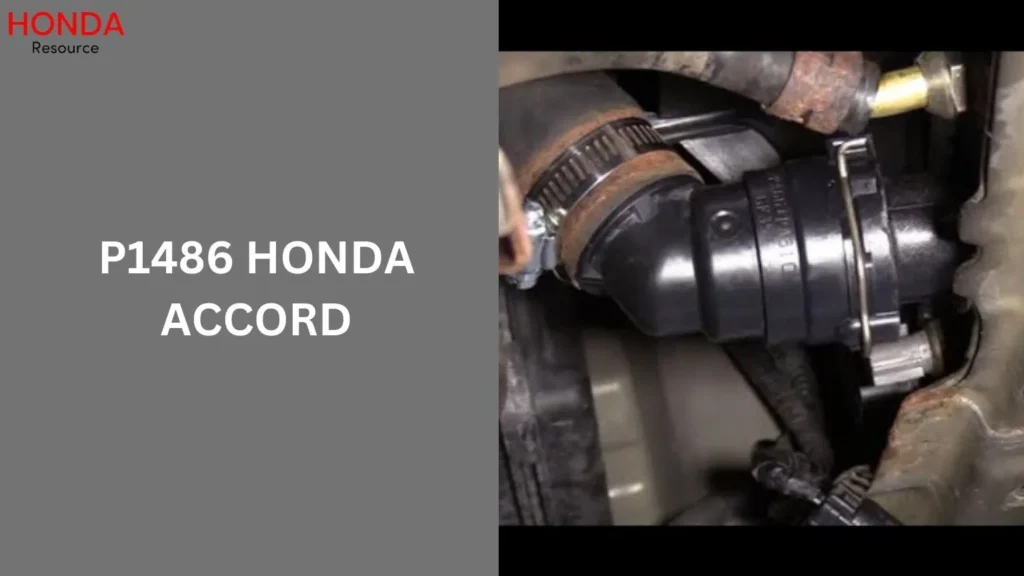
Understanding OBD-II Codes
OBD-II (On-Board Diagnostics II) codes are standardized diagnostic trouble codes used to identify issues in vehicles equipped with the OBD-II system. These codes provide a starting point for mechanics and DIY enthusiasts to pinpoint specific problems affecting the vehicle’s performance.
What Does the P1486 Code Mean?
The P1486 code specifically relates to issues with the Electronic Load Detector (ELD) circuit in Honda vehicles, including the Accord. The ELD circuit is responsible for monitoring the electrical load on the vehicle’s charging system and ensuring proper voltage regulation.
Common Causes of P1486 Honda Accord
The P1486 code in a Honda Accord typically points to a problem with the Electronic Load Detector (ELD) circuit. This component is crucial for monitoring the electrical load on the vehicle’s charging system and ensuring proper voltage regulation. When the ELD circuit malfunctions, it can trigger the P1486 code. Here are some of the common causes of this issue:
Faulty Electronic Load Detector (ELD) Sensor
The ELD sensor itself may be defective. Over time, internal components can wear out or fail, causing incorrect readings and triggering the P1486 code.
Wiring Issues
Damaged or corroded wiring in the ELD circuit is a common cause of this error code. Wiring can become frayed, pinched, or otherwise compromised, leading to poor electrical connections.
Loose or Corroded Connections
Loose or corroded connections at the battery terminals, ELD sensor, or other related components can disrupt the proper functioning of the ELD circuit. Ensuring all connections are tight and clean is essential.
Battery Problems
A weak or failing battery can cause fluctuations in the electrical load, potentially triggering the P1486 code. It’s important to check the health of the battery and replace it if necessary.
Alternator Issues
The alternator is responsible for maintaining the vehicle’s electrical system. If the alternator is malfunctioning, it can affect the ELD circuit’s readings and trigger the P1486 code.
Faulty Charging System
Problems within the charging system, such as a failing voltage regulator or issues with other related components, can lead to incorrect readings by the ELD sensor and result in the P1486 code being set.
Electrical Shorts or Opens
Short circuits or open circuits within the ELD wiring can cause intermittent or incorrect signals, leading to the activation of the P1486 code.
PCM (Powertrain Control Module) Issues
While less common, a malfunctioning PCM can also cause the P1486 code to appear. The PCM is responsible for monitoring various sensors, including the ELD sensor, and if it fails to process the information correctly, it can trigger the code.
Aftermarket Modifications
Installing aftermarket electrical components or modifications that affect the vehicle’s electrical system can interfere with the ELD circuit and lead to the P1486 code.
Environmental Factors
Extreme temperatures, moisture, or exposure to harsh environmental conditions can affect the performance of the ELD sensor and related components, potentially triggering the P1486 code.
Symptoms of P1486 code
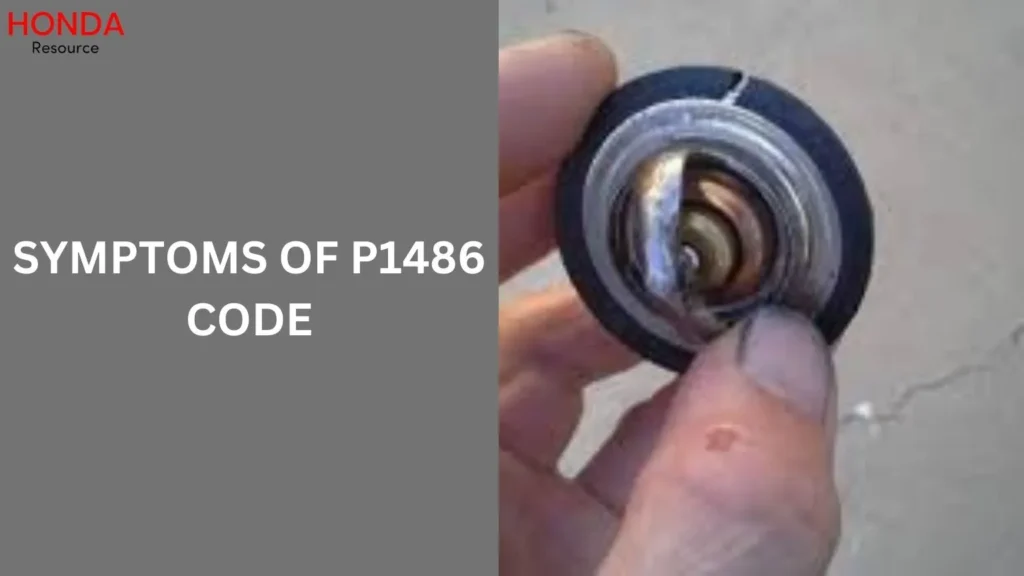
When the P1486 code is triggered in a Honda Accord, it indicates a problem with the Electronic Load Detector (ELD) circuit. Recognizing the symptoms associated with this code can help in diagnosing and addressing the issue promptly. Here are some common symptoms of the P1486 code:
Check Engine Light (CEL)
The most apparent symptom is the illumination of the Check Engine Light on the dashboard. This warning light indicates that the vehicle’s onboard diagnostics system has detected a problem.
Erratic Charging System Behavior
You might notice unusual behavior from the vehicle’s charging system. This could include fluctuations in the voltage, which can affect the performance of the battery and alternator.
Dimming Headlights and Interior Lights
One of the signs of an electrical load issue is the dimming of the headlights and interior lights, especially when additional electrical loads are applied, such as turning on the air conditioning or using power windows.
Battery Warning Light
In some cases, the battery warning light may also illuminate, indicating a problem with the charging system, which could be related to the ELD circuit malfunction.
Difficulty Starting the Vehicle
A faulty ELD circuit can lead to an inconsistent supply of electrical power, making it difficult to start the vehicle. You might experience a slow crank or multiple attempts to start the engine.
Diagnosing P1486 in Honda Accord
Diagnosing the P1486 code typically involves using an OBD-II scanner to retrieve the code and examining the ELD circuit for any visible signs of damage or wear. Testing the ELD sensor’s functionality and checking related wiring connections are crucial steps in the diagnostic process.
Steps to Fix P1486 Code
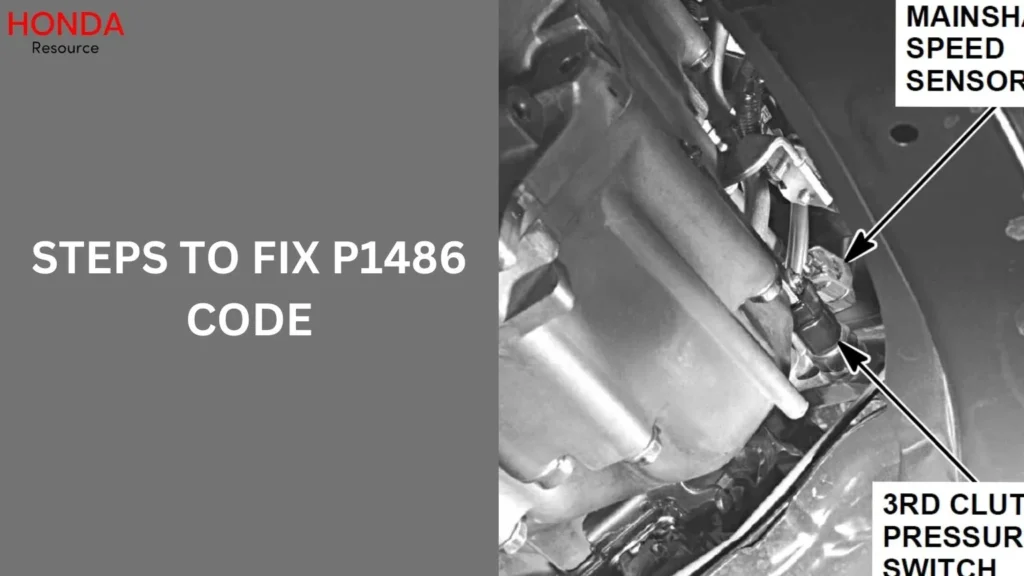
Repairing the P1486 code in a Honda Accord often requires addressing the root cause of the issue. This may involve repairing or replacing damaged wiring, testing and replacing the ELD sensor if faulty or ensuring proper connections in the charging system.
Here are the steps you can follow:
Use an OBD-II Scanner
- Connect the Scanner: Plug the OBD-II scanner into the vehicle’s diagnostic port, usually located under the dashboard.
- Retrieve Codes: Turn on the ignition without starting the engine and retrieve the trouble codes stored in the vehicle’s computer.
- Confirm P1486: Verify that the P1486 code is present and note any other related codes that may provide additional insight.
Inspect the ELD Sensor
- Locate the ELD Sensor: The ELD sensor is typically located near the fuse box or battery.
- Visual Inspection: Check for visible signs of damage, such as cracks, corrosion, or loose connections.
- Test the Sensor: Use a multimeter to check the sensor’s functionality. Compare the readings with the manufacturer’s specifications to determine if the sensor is faulty.
Check the Wiring and Connections
- Inspect Wiring: Look for any frayed, pinched, or damaged wires in the ELD circuit. Pay close attention to areas where wires may be exposed to heat or movement.
- Test Continuity: Use a multimeter to test the continuity of the wires in the ELD circuit. Repair or replace any damaged wiring as needed.
- Clean and Secure Connections: Ensure all connections are clean and securely fastened. Use an electrical contact cleaner if necessary.
Test the Battery and Alternator
- Check Battery Health: Test the battery voltage and charge. Replace the battery if it is weak or failing.
- Inspect Alternator: Check the alternator’s output and ensure it is charging the battery correctly. Replace the alternator if it is not functioning properly.
Replace Faulty Components
- ELD Sensor Replacement: If the ELD sensor is determined to be faulty, replace it with a new one.
- Wiring Repairs: Repair or replace any damaged wiring in the ELD circuit.
- Alternator or Battery Replacement: Replace the alternator or battery if they are not working correctly.
Tools Needed for Diagnosis and Repair
To effectively diagnose and repair the P1486 code, you’ll need basic tools such as an OBD-II scanner, a multimeter for electrical testing, and potentially tools for accessing components in the engine bay or under the dashboard.
Precautions When Dealing with P1486
When working on electrical components like the ELD circuit, it’s essential to disconnect the vehicle’s battery to prevent accidental short circuits or damage to sensitive electronics. Following manufacturer guidelines and safety precautions is crucial to avoid personal injury or further vehicle damage.
When to Seek Professional Help?
While some DIY enthusiasts may attempt to diagnose and fix the P1486 code themselves, consulting a professional mechanic is recommended if you’re unsure about handling electrical repairs or if the issue persists after initial troubleshooting steps.
Cost of Repairing P1486 in Honda Accord
The cost of repairing the P1486 code can vary depending on the extent of the damage, the parts needed for replacement, and labor rates in your area. DIY repairs may save on labor costs, but professional repairs ensure proper diagnosis and long-term reliability.
Preventive Maintenance Tips
To prevent the recurrence of the P1486 code and similar electrical issues in your Honda Accord, regular maintenance of the charging system, including cleaning terminals, checking battery health, and inspecting wiring integrity, is essential.
People also ask
What is code p1486?
Code P1486 in a Honda Accord refers to an issue with the Electronic Load Detector (ELD) circuit. The ELD is responsible for monitoring the electrical load on the vehicle’s charging system to ensure proper voltage regulation. When the ELD circuit malfunctions, it triggers the P1486 code, indicating a potential problem with the ELD sensor, wiring, connections, or other related components. This issue can lead to various electrical problems, such as erratic charging behavior, dimming lights, or difficulty starting the vehicle.
Can you drive a Honda Accord with the check engine light on?
Yes, you can drive a Honda Accord with the check engine light on, but it’s not recommended. The check engine light indicates an issue that needs attention. Driving with it on can lead to further damage or potential safety issues. It’s best to diagnose and fix the problem as soon as possible.
How to clear check the engine light Honda Accord 2016?
To clear the check engine light on a Honda Accord 2016:
Diagnostic Tool: Use an OBD-II scanner to connect to the vehicle’s diagnostic port, typically located under the dashboard.
Read Codes: Follow the scanner’s instructions to read the trouble codes stored in the vehicle’s computer.
Clear Codes: Select the option to clear or reset the codes. Confirm the action when prompted by the scanner.
Turn Off Ignition: Turn off the ignition and disconnect the OBD-II scanner.
Monitor Light: Start the engine and check if the check engine light has turned off. If it remains on, there may be an underlying issue that needs further attention.
What causes the check engine light to come on a Honda Accord?
The check engine light in a Honda Accord can come on due to various reasons, including:
Loose or Faulty Gas Cap: Ensures proper sealing of the fuel system.
Oxygen Sensor Malfunction: Affects fuel mixture and emissions.
Catalytic Converter Issues: Reduces harmful emissions.
Mass Airflow Sensor Problems: Impacts air-fuel ratio.
Faulty Spark Plugs or Wires: Causes misfires and poor engine performance.
Vacuum Leaks: Affects engine efficiency and emissions.
EGR Valve Issues: Impacts exhaust gas recirculation.
Transmission Problems: Affects overall vehicle performance.
Battery or Charging System Issues: Impacts electrical systems and performance.
Conclusion
In Conclusion, Dealing with the P1486 code in your Honda Accord requires understanding its causes, and symptoms, and proper diagnostic and repair procedures. By addressing this issue promptly and following preventive maintenance tips, you can ensure your vehicle remains in good condition for miles to come.

I’m Henry Leclerc, a passionate professional car mechanic with a deep love for Honda cars. With years of hands-on experience and extensive knowledge about all Honda car models, I’ve created this website to share my expertise and help fellow Honda enthusiasts keep their vehicles in top-notch condition.


